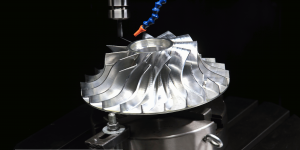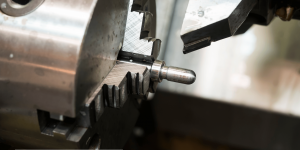Introduction
CNC (Computer Numerical Control) lathes are vital machines that are operational in production companies to create cylindrical products with precision and reliability. CNC lathes can be categorized into two parts, namely, the CNC Swiss lathe and the CNC lathe. They are capable of precision machining but have different designs, capabilities, applications, and operating costs. It is crucial to note these differences to determine which CNC turning service provider is desirable for the operation of a manufacturing business.
The distinctions between CNC Swiss Lathes and traditional CNC Lathes
Design and Construction
CNC Swiss lathes are quite different from conventional ones as the main spindle is parallel to the bed, not perpendicular to it; this enables longer workpiece lengths to be supported without bending. The headstock can slide along the bed in an axial direction while the workpiece rotates and the tools remain fixed. This gives better rigidity and precision in cutting long parts of about 20 to 30 inches on a single axis.
CNC lathes are of the more conventional horizontal bed way type in which headstock is stationary and the tool post traverses along the x and z axes. This makes it possible to machine large-diameter parts. Still, length is restricted by deflection before additional support is provided for the workpiece. The majority of standard CNC lathes can machine various parts that are approximately 6 inches or smaller in length between centres.

Productivity and Precision
The key features of the CNC Swiss lathe that make it suitable for very high productivity machining of small, complex, precision parts with high accuracy are: The headstock is of sliding type. The tool has a fixed position, hence giving stability and no tool deflection. CNC Swiss machines can allow part tolerances of the order of +/- 0. 0005 inches, and this is achievable in a repetitive manner. Small medical components, electronics parts, hardware pieces, and car parts are the proper application of this process.
CNC lathes are accurate and have closer tolerances than manual machines, holding +/- 0. 005 inches reasonably frequently. It can cut thicker pieces on a more considerable diameter bar stock and is also capable of dealing with a more significant number of parts. However, because of the cantilever effect of the horizontal bedway design, rigidity poses a constraint on the length-to-diameter ratio that they can work on effectively.
During the choice making process, the efficiency of setup time and changeover time has to be considered.
One of the most prominent features of the CNC Swiss machine is the moving headstock, which means that the changeover from one part to the other is swift, thus increasing the productive time. Bar feeders are used to feed fresh stock automatically, while finished parts are just turned off. There is no need to re-chuck or align the parts as in the case of CNC lathes in which the changeover processes can take a lot of time. Therefore, for high-volume production of small-turned parts, the CNC Swiss enjoys a higher level of efficiency.
Cost Considerations
Typically, CNC Swiss lathes require the buyer to lay down a slightly higher capital commitment; the machines begin at $150,000 as compared to $75,000 for a conventional CNC lathe. However, when the number of parts produced in the lifetime of the machine is considered, the automation, fast tool change, and high production capacity of the CNC Swiss machine make more economic sense. Higher throughput and precision might offset the initial difference in price for the desired applications.
Selecting the Right CNC Turning Machinery

All the types of CNC lathe machines have their own benefits that can suit a particular kind of operation.
Here are some of the factors to consider when deciding which is the better fit:
– Part size: Diameter and length must be considered when choosing suitable machines.
– Tolerances and finishes – How close does the final part have to fit, and what degree of smoothness is required?
– Complexity – Are additional operations like milling or drilling often needed?
– Lot sizes – small to medium vs large.
– Changeover efficiency – For the Swiss, changeovers are more frequent.
– Costs – CNC Swiss machines are relatively costly in the beginning.
Depending on these factors, the manufacturers can calculate the proportion with reference to the work pieces to be produced and understand which is the best CNC turning equipment, which can be either a CNC Swiss lathe or a CNC lathe. It is also advisable to work with a reputable machine shop that deals with either of the lathe’s types for additional support.
Conclusion
CNC Swiss lathes and CNC lathes are both used for precise machining but are more suitable for different types of work. CNC Swiss is ideal for tightly tolerance intricate parts with precision at high rates for small-sized parts, while CNC lathes feature higher metal cutting capabilities, particularly for larger diameters of the parts. Thus, after assessing all functional and economic factors of the components, manufacturers can choose the most appropriate CNC service to improve the functional and financial performance of their components. It is also advisable to seek the consultation of a CNC specialist to determine the most suitable CNC turning equipment to use.
